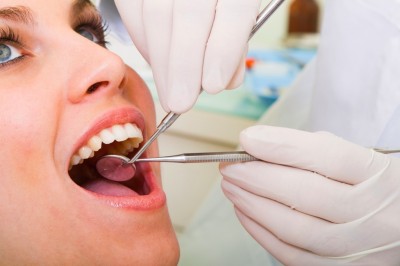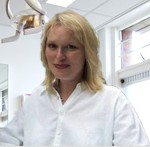Preventing Periodontal Disease and Tooth Loss
Published:May 16th, 2012
What Is Periodontal Disease?
Periodontal disease is gum disease, and is a condition to be taken seriously, and it’s caused by a buildup of plaque bacteria. It’s estimated around three quarters of adults have some degree of periodontal disease, and it’s the major cause of tooth loss in the world. Healthy gums should be a nice pale pink colour, and should be firm to the touch, fitting snugly around the teeth.
In its mildest form gum disease is called gingivitis, and if caught at this stage is easily curable through having a better oral hygiene routine and through having your teeth professionally cleaned. However the later stages of periodontal disease are much more serious and the condition can become chronic. This means it can only be managed through quite invasive and expensive treatment which really isn’t very pleasant.
The trouble with periodontal disease is that it causes the gums to pull away from the teeth, as it essentially destroys the tissues. This creates pockets of infection around the teeth, and without treatment the teeth will become loose.
What are The Symptoms of Periodontal Disease?
Common symptoms of periodontal disease include:
- Gums which look red and inflamed
- Your gums may feel tender to the touch
- You may notice they bleed when brushed or during flossing
- Having persistent bad breath
What Causes Periodontal Disease?
Periodontal disease is caused by plaque bacteria building up on the teeth and gums. Plaque bacteria are present in everyone’s mouth, and gradually multiply during the day. These bacteria feed off excess food left behind in your mouth, and particularly love sweet and sticky foods as these tend to become trapped in between your teeth.
As the bacteria feed they produce acid, and this acid causes inflammation in the gum tissues, creating gum disease. Any plaque bacteria left behind on the teeth after brushing and flossing will begin to harden into calculus after just 24 to 48 hours, and calculus can only be removed by your dentist or hygienist.
Preventing Gum Disease
Gum disease is treatable in its early stages. The early stages of gingivitis can generally be treated through having your teeth professionally cleaned to remove the buildup of calculus that irritates the gums, and by simply brushing and flossing thoroughly every day. It’s very important to brush for at least 2 minutes twice a day, and to floss once-a-day, preferably last thing at night. Using fluoride toothpaste and fluoride mouthwash will help prevent the bacteria from building up too quickly.
If you have chronic periodontal disease than the treatment is more complicated, and you’ll probably need to have your teeth and gums deep cleaned. This process is often called scaling and planing and is very effective at removing pockets of infection in the gums. Depending on the level of infection, this treatment can be carried out in several stages.
Sometimes gum surgery may be necessary to try to repair the damage caused by chronic periodontal disease, and you’ll need to be very careful about looking after your teeth and gums in the future.
It’s far better to avoid the risk of developing this condition in the first place, and the best way to do this is to see your dentist at regular intervals, and to have your teeth professionally cleaned at the same time. Regular checkups will enable your dentist to pick up any early signs of gum disease so they can be treated quickly. When combined with a thorough daily oral hygiene routine, you should be able to keep gum disease at bay.
About the author
 Alison, is a UK born and educated dental professional with over 25 years experience.
Alison, is a UK born and educated dental professional with over 25 years experience.




Write a Comment of Preventing Periodontal Disease and Tooth Loss